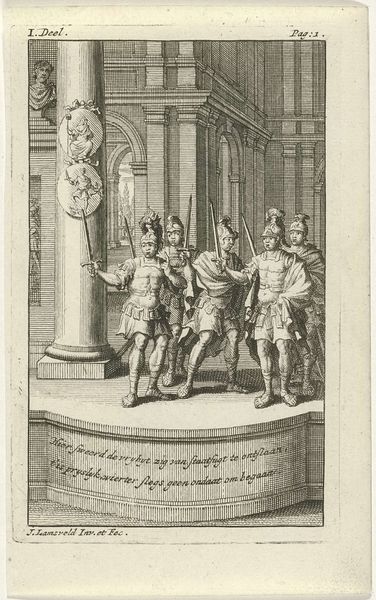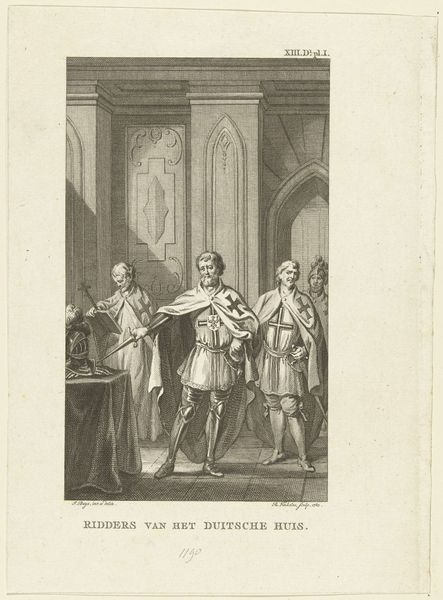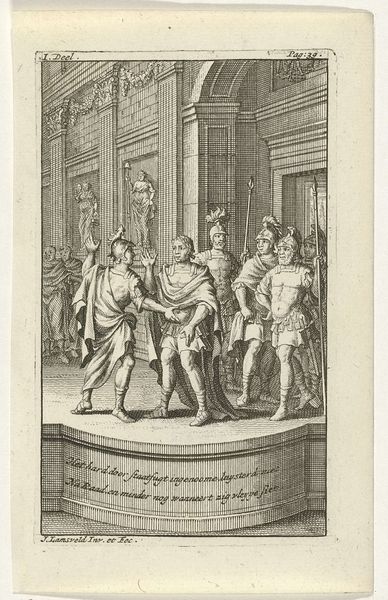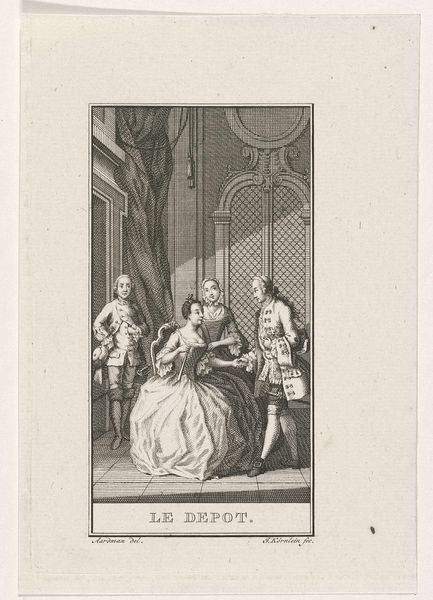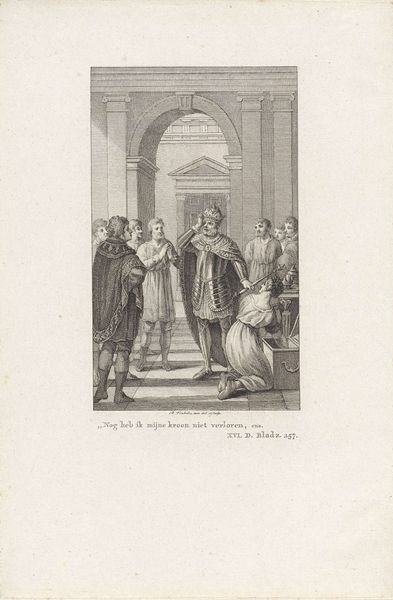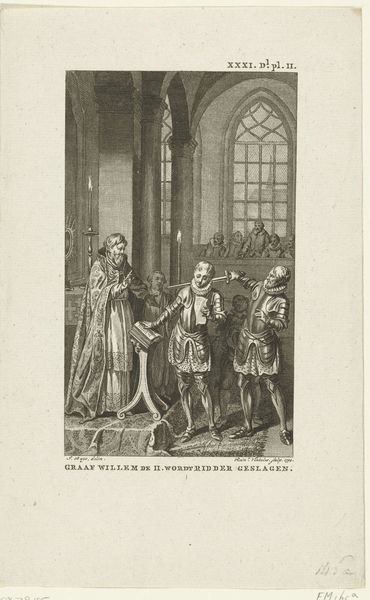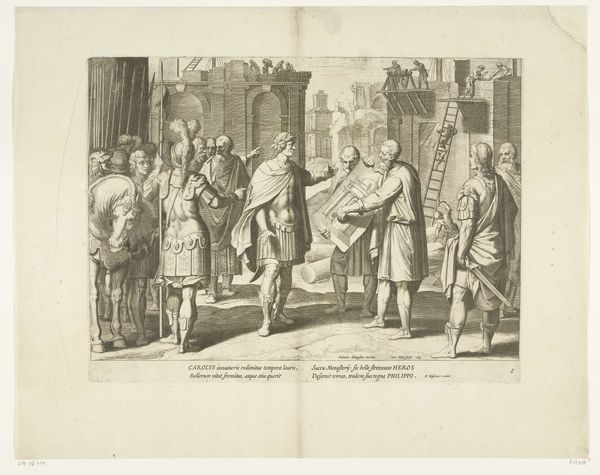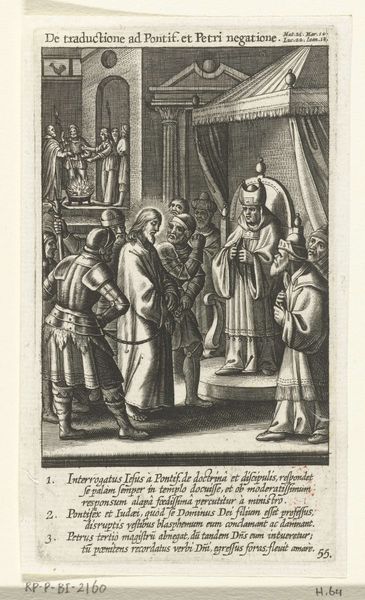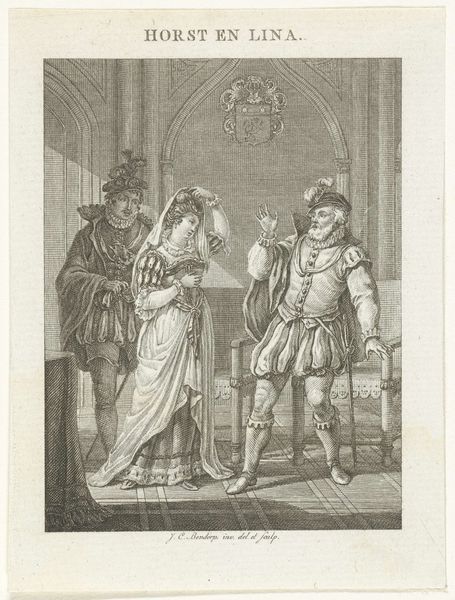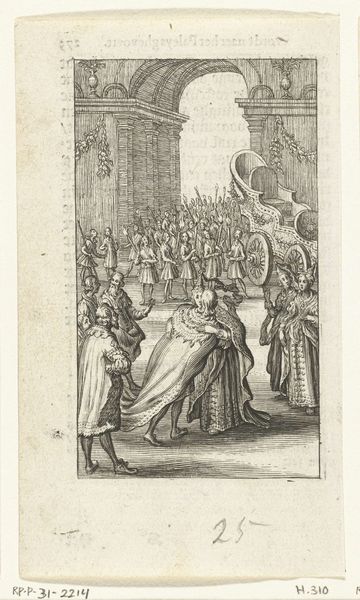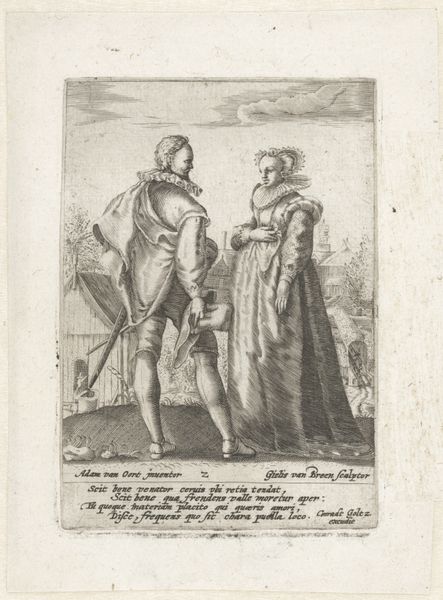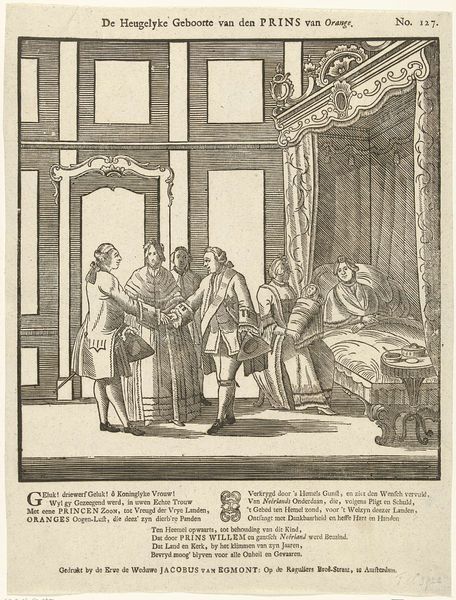
print, engraving
#
portrait
#
baroque
# print
#
old engraving style
#
figuration
#
history-painting
#
engraving
Dimensions: height 132 mm, width 83 mm
Copyright: Rijks Museum: Open Domain
Curator: This engraving by Jan Lamsvelt, created around 1728, is titled "Calpurnia Pisonis vertelt Julius Caesar haar droom", currently residing here at the Rijksmuseum. The composition has such an immediacy. The worried expressions are really compelling, especially given it's just black and white print. Editor: You're right. It's stark, but there's a real weight to it. I'm drawn to the cross-hatching. Look at the way Lamsvelt uses it to build form and shadow – almost sculptural. The story is delivered, by Caesar’s reaction, as if a thunderbolt was flung! The detail in the drapery contrasts with the near-empty faces and expression in his guards' face. Curator: Exactly! What is remarkable about prints in the 18th century is their increasingly important function for information distribution, in printed publications such as books and newspapers. We can speculate that the choice of the technique serves this purpose in a twofold relationship. Prints as a democratic and more easily obtainable medium and prints serving the Enlightenment and humanist themes as a message about power and civic life in a very complex relationship. Editor: I see it also in terms of labor. The act of engraving is so deliberate, so painstaking. Each line is a conscious decision, reflective of both artistic skill and the technology of the era and economy for producing knowledge to wide swathes of people in comparison with the unique piece of work in oil painting. It would've taken serious work hours to create such definition. Curator: Definitely. And think about the role prints like these played in shaping historical consciousness. Images like these contributed to the construction of collective memory of Rome. Jan Lamsvelt's print situates Julius Caesar within a network of symbols of leadership and political power. Editor: Yet, on closer inspection, there’s the emotional vulnerability depicted – Caesar appears taken by his wife's dream while other characters present a range of attitudes regarding that information: indifference, shock, fear… Calpurnia touching his garment might not prevent his final destiny but embodies female power. Interesting as well to decode how an artist can work the material, such as printing as an affordable, democratic medium that depicts power. Curator: I find I’m pondering about the print’s role in reinforcing or questioning existing power structures. It definitely offers a lens for looking at Rome as a key turning point of political debate. Editor: For me, the beauty is also in the physicality of its making. Every stroke tells of both artistic skill and social position – a material imprint of early modern society.
Comments
No comments
Be the first to comment and join the conversation on the ultimate creative platform.
